Input interpretation

3-methyl-2-cyclohexen-1-one
Chemical names and formulas

formula | CH_3C_6H_7(=O) Hill formula | C_7H_10O name | 3-methyl-2-cyclohexen-1-one IUPAC name | 3-methyl-1-cyclohex-2-enone alternate names | 3-methyl-2-cyclohexene-1-one | 3-methyl-2-cyclohexenone | 3-methylcyclohex-2-en-1-one | seudenone mass fractions | C (carbon) 76.3% | H (hydrogen) 9.15% | O (oxygen) 14.5%
Lewis structure
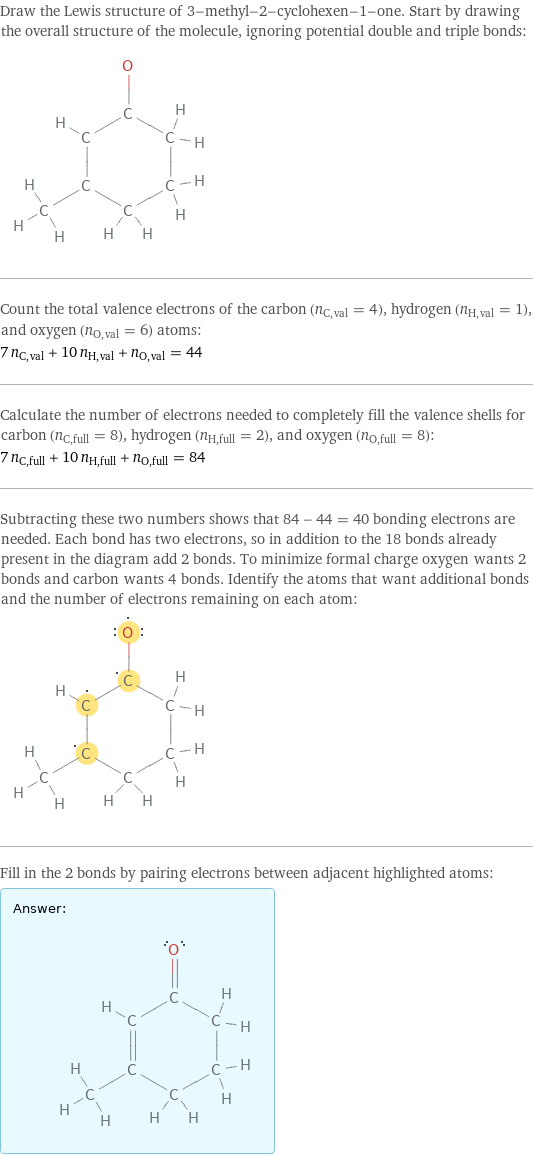
Draw the Lewis structure of 3-methyl-2-cyclohexen-1-one. Start by drawing the overall structure of the molecule, ignoring potential double and triple bonds: Count the total valence electrons of the carbon (n_C, val = 4), hydrogen (n_H, val = 1), and oxygen (n_O, val = 6) atoms: 7 n_C, val + 10 n_H, val + n_O, val = 44 Calculate the number of electrons needed to completely fill the valence shells for carbon (n_C, full = 8), hydrogen (n_H, full = 2), and oxygen (n_O, full = 8): 7 n_C, full + 10 n_H, full + n_O, full = 84 Subtracting these two numbers shows that 84 - 44 = 40 bonding electrons are needed. Each bond has two electrons, so in addition to the 18 bonds already present in the diagram add 2 bonds. To minimize formal charge oxygen wants 2 bonds and carbon wants 4 bonds. Identify the atoms that want additional bonds and the number of electrons remaining on each atom: Fill in the 2 bonds by pairing electrons between adjacent highlighted atoms: Answer: | |
3D structure
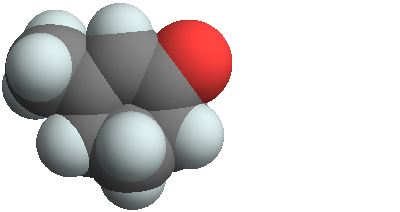
3D structure
Basic properties
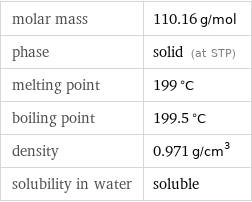
molar mass | 110.16 g/mol phase | solid (at STP) melting point | 199 °C boiling point | 199.5 °C density | 0.971 g/cm^3 solubility in water | soluble
Units

Solid properties (at STP)
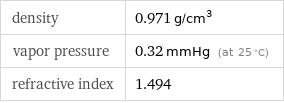
density | 0.971 g/cm^3 vapor pressure | 0.32 mmHg (at 25 °C) refractive index | 1.494
Units

Thermodynamic properties

molar heat of vaporization | 43.7 kJ/mol specific heat of vaporization | 0.3967 kJ/g (at STP)
Chemical identifiers
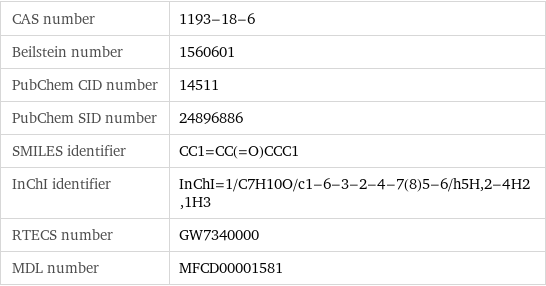
CAS number | 1193-18-6 Beilstein number | 1560601 PubChem CID number | 14511 PubChem SID number | 24896886 SMILES identifier | CC1=CC(=O)CCC1 InChI identifier | InChI=1/C7H10O/c1-6-3-2-4-7(8)5-6/h5H, 2-4H2, 1H3 RTECS number | GW7340000 MDL number | MFCD00001581
Safety properties

flash point | 68.33 °C

DOT hazard class | 9.2 DOT numbers | 9201
Toxicity properties

RTECS classes | other